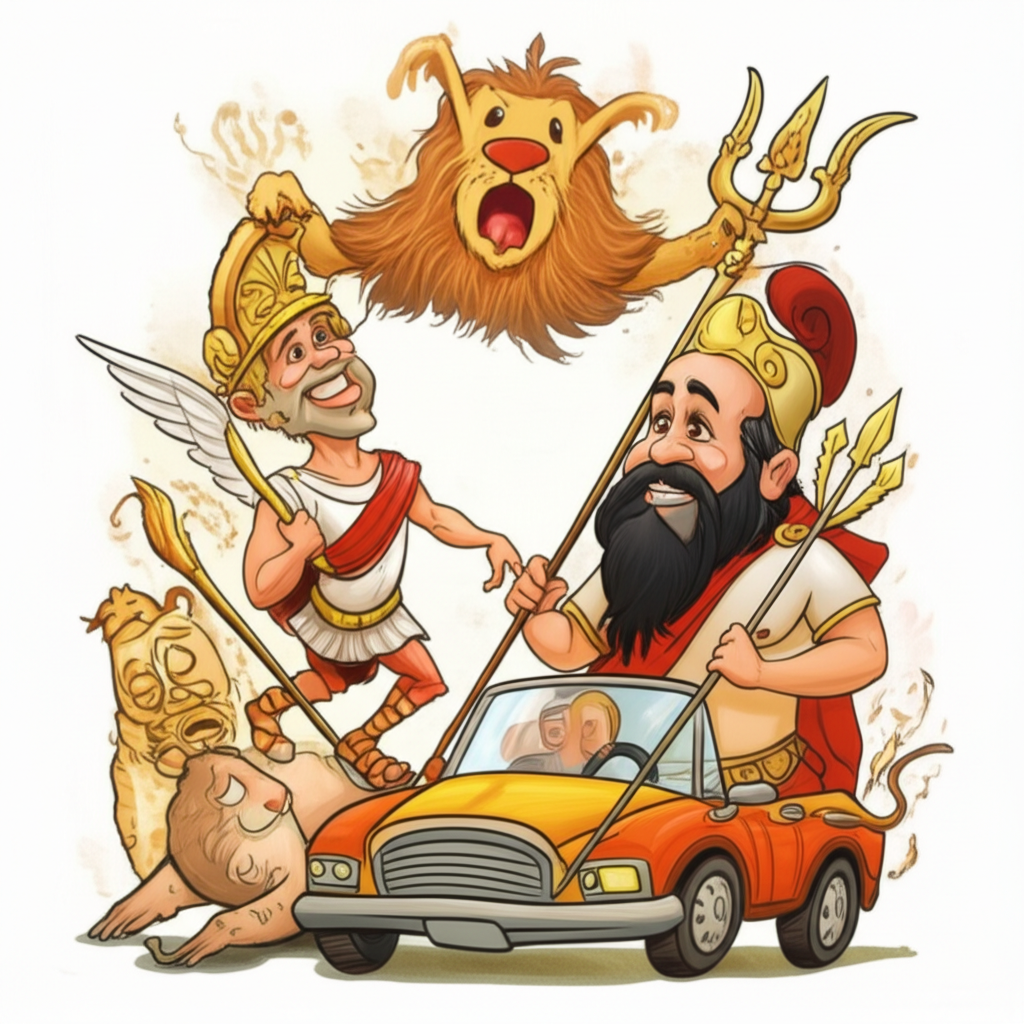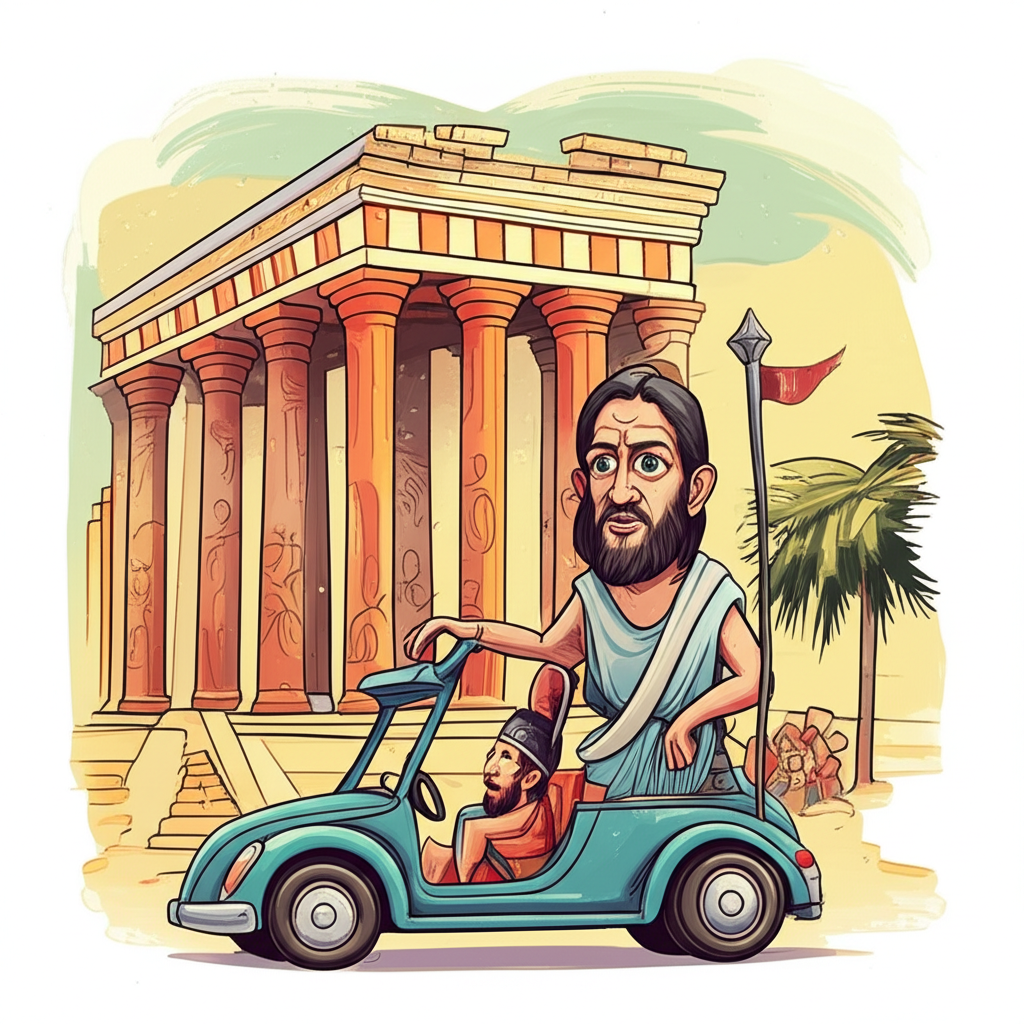
Introduction:
The tale of Heracles (known as Hercules in Roman mythology) and his legendary Twelve Labors is a cornerstone of ancient Greek mythology. This enduring narrative, brimming with heroic feats and monstrous adversaries, has captivated audiences for millennia. While Heracles stands as the central figure, the swift-footed messenger god Hermes often plays a subtle yet crucial role in the background, guiding and aiding the hero on his perilous journey. This is not a story of divine truth, but rather a traditional story passed down through generations of ancient Greeks, a cultural artifact offering insights into their beliefs, values, and worldview.
Origins and Cultural Background:
The myths surrounding Heracles and the Olympian gods flourished during a period of significant cultural and societal development in ancient Greece, spanning roughly from the Bronze Age (circa 3200-1100 BCE) through the Classical period (circa 510-323 BCE). During this time, the Greeks developed complex religious beliefs centered around a pantheon of gods and goddesses residing on Mount Olympus. These deities were seen as powerful, often capricious, beings who intervened in human affairs. The world was perceived as a realm filled with both wonder and danger, where monsters lurked in the shadows and fate played a decisive role in the lives of mortals. Myths served not only as entertainment but also as a means of explaining the natural world, reinforcing social norms, and exploring fundamental questions about human existence. Heroic narratives, like that of Heracles, provided models of courage, strength, and perseverance, inspiring individuals to strive for greatness and overcome adversity.
Character Description: Hermes, the Guide
Hermes, the winged messenger of the gods, is often depicted as a youthful, athletic figure, instantly recognizable by his winged sandals (talaria), winged helmet (petasos), and the herald’s staff, the caduceus, entwined with two snakes. He is the god of boundaries, travel, commerce, thieves, athletes, and orators. However, beyond these associations, Hermes embodies the qualities of quick-wittedness, resourcefulness, and divine intervention. He is the intermediary between the gods and mortals, a guide through the perilous landscapes of myth, and a facilitator of communication. In the context of Heracles’ Labors, Hermes’s swiftness and knowledge of hidden paths make him a valuable, albeit often unseen, ally. His winged sandals symbolize the ability to transcend earthly limitations, while his caduceus represents balance and negotiation, suggesting his role in mediating difficult situations.
Main Story: Hermes and the Hidden Hand in Heracles’ Labors
Driven mad by Hera, the jealous wife of Zeus, Heracles committed a terrible act, slaying his own wife and children. To atone for this heinous crime, he was ordered by the Oracle of Delphi to serve King Eurystheus of Tiryns and complete ten labors (later increased to twelve). These labors were designed to be impossible tasks, pushing Heracles to the very limits of his strength and endurance.
Throughout this arduous journey, Hermes, though rarely taking center stage, often subtly influenced events, offering assistance in ways both direct and indirect. Take, for example, the first labor: the slaying of the Nemean Lion, a beast with impenetrable hide. While the myth primarily focuses on Heracles’ brute strength in strangling the lion, some accounts suggest Hermes guided him to the lion’s lair, perhaps even providing insight into the beast’s invulnerability.
Similarly, during the second labor, the slaying of the Hydra of Lerna, a multi-headed serpent whose heads regrew when severed, Heracles faced a seemingly insurmountable challenge. While Heracles battled the monster, his nephew Iolaus cauterized the severed necks to prevent regeneration. It’s whispered in some tellings that Hermes, ever the resourceful one, subtly guided Iolaus to this crucial solution, perhaps appearing in a dream or leaving behind a discarded ember.
Later, in the tenth labor, when tasked with retrieving the cattle of Geryon, a three-bodied giant, Heracles needed to navigate treacherous terrains and overcome formidable obstacles. Again, the narrative hints at Hermes’s intervention, suggesting that he may have smoothed Heracles’s path, diverting dangerous storms or revealing hidden routes. The stories say that during Heracles’s 11th labor, which involved retrieving the golden apples of Hesperides, Hermes advised him on how to approach the Titan Atlas who held up the sky, and who was the father of the Hesperides.
These subtle acts of assistance are not always explicitly stated, but they are often implied, woven into the fabric of the myth. Hermes’s presence acts as a constant, reassuring force, a reminder that even in the face of seemingly insurmountable odds, divine intervention can subtly shift the balance. He is the unseen hand that guides the hero, the whisper of inspiration that sparks ingenuity, the subtle advantage that tips the scales towards victory.
Symbolism and Meaning:
The story of Heracles and his Labors, particularly with the implicit support of Hermes, is rich in symbolism. It represents the human struggle against adversity, the triumph of good over evil, and the importance of perseverance in the face of seemingly impossible challenges. The Labors themselves can be interpreted as metaphors for the obstacles and temptations that individuals face in life. Hermes’s role, then, symbolizes the guidance and support that can be found in unexpected places, the importance of seeking wisdom and resourcefulness, and the belief that even in the darkest of times, divine providence can offer a helping hand. To the ancient Greeks, the myth may have served as a reminder that even the most flawed individuals, like Heracles, could achieve greatness through dedication and divine assistance.
Modern Perspective:
The myth of Heracles and his Labors continues to resonate in modern culture. It is frequently adapted in literature, movies, and video games, often portraying Heracles as a powerful and flawed hero struggling against fate. Hermes, in these modern interpretations, is often depicted as a trickster figure or a helpful guide, depending on the narrative. The enduring appeal of the story lies in its timeless themes of heroism, redemption, and the human capacity to overcome adversity. Cultural studies scholars often analyze the myth for its insights into ancient Greek values, social structures, and religious beliefs.
Conclusion:
The story of Hermes and the Labors of Heracles is a captivating tale from ancient Greek mythology, a cultural narrative that explores themes of heroism, perseverance, and divine intervention. It is a testament to the power of storytelling and the enduring human fascination with myths and legends. As Muslims, we understand that this is a cultural story, not a divine truth. We believe that Allah is the sole Creator and Sustainer of the universe. Nonetheless, these ancient tales offer a glimpse into the cultural heritage of past civilizations, sparking our imaginations and reminding us of the rich tapestry of human storytelling traditions. Let us appreciate these stories for their cultural significance and artistic merit, while remaining steadfast in our faith and belief in the one true God.





